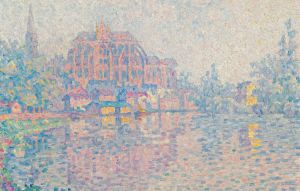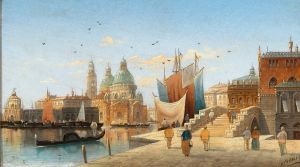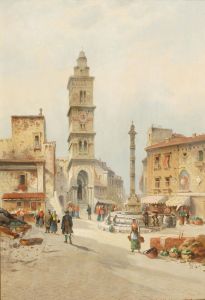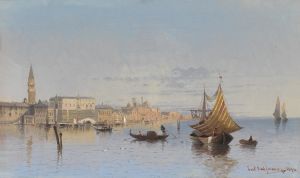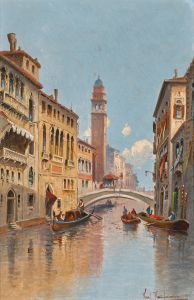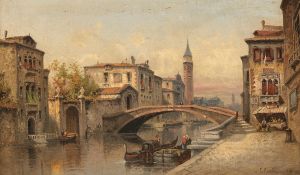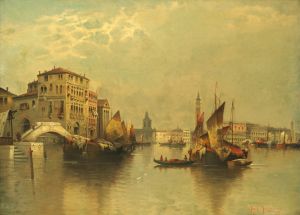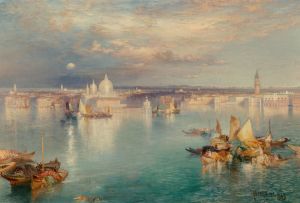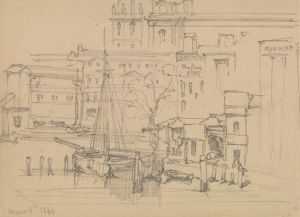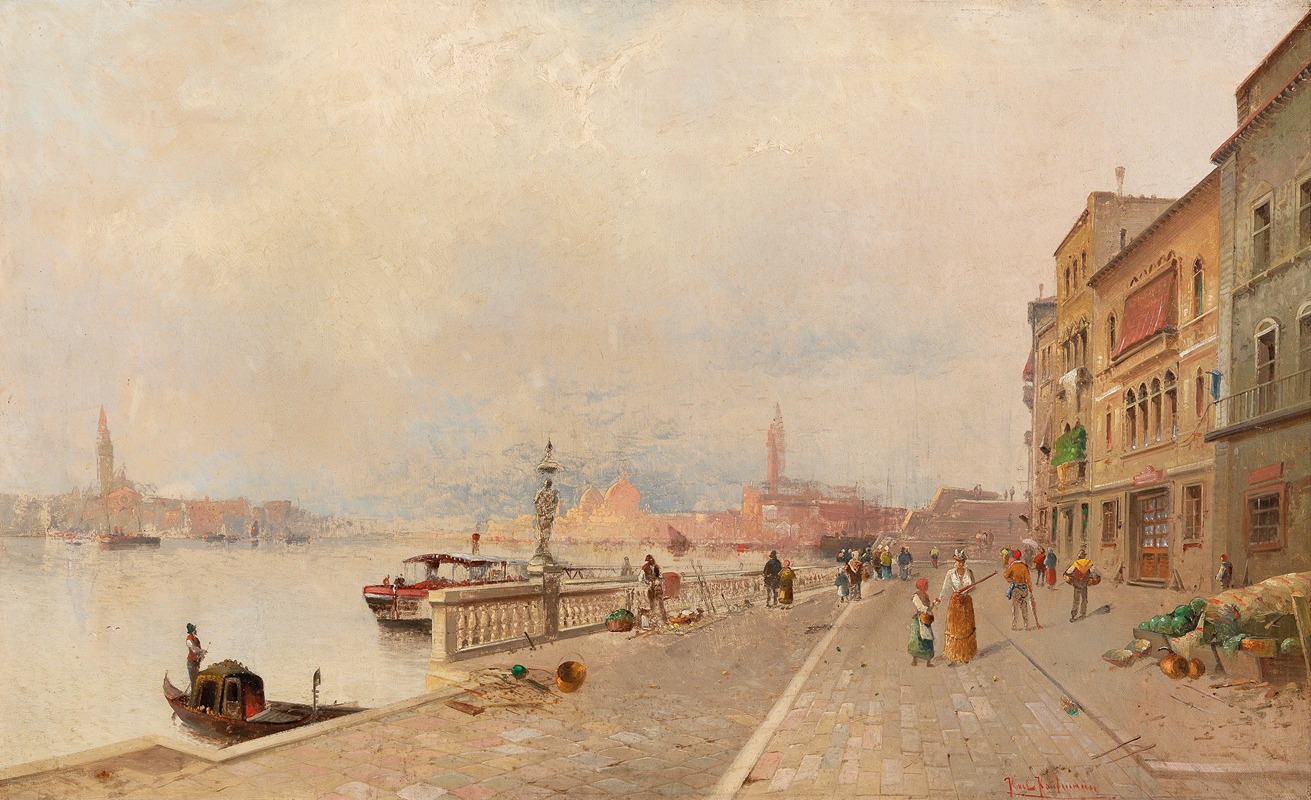
Venice Riva dei Sette Martiri
A hand-painted replica of Karl Kaufmann’s masterpiece Venice Riva dei Sette Martiri, meticulously crafted by professional artists to capture the true essence of the original. Each piece is created with museum-quality canvas and rare mineral pigments, carefully painted by experienced artists with delicate brushstrokes and rich, layered colors to perfectly recreate the texture of the original artwork. Unlike machine-printed reproductions, this hand-painted version brings the painting to life, infused with the artist’s emotions and skill in every stroke. Whether for personal collection or home decoration, it instantly elevates the artistic atmosphere of any space.
Karl Kaufmann was an Austrian painter known for his detailed and atmospheric landscapes and cityscapes. He was born in 1843 in Neuplachowitz, a town in the Austrian Empire, which is now part of the Czech Republic. Kaufmann studied at the Academy of Fine Arts in Vienna, where he honed his skills in painting and developed a keen interest in capturing architectural and natural beauty.
Kaufmann's oeuvre is characterized by his ability to depict the charm and elegance of European cities, particularly Venice. His works often feature intricate details and vibrant colors, bringing to life the bustling streets and serene canals of the cities he painted. Kaufmann traveled extensively throughout Europe, drawing inspiration from the diverse landscapes and urban environments he encountered.
One of his notable works is "Venice Riva dei Sette Martiri," which captures a picturesque view of the Riva dei Sette Martiri, a promenade in Venice, Italy. This location is known for its scenic views of the Venetian Lagoon and its proximity to several historical landmarks. Kaufmann's painting of this area exemplifies his skill in rendering architectural details and his ability to convey the unique atmosphere of Venice.
In "Venice Riva dei Sette Martiri," Kaufmann employs a meticulous approach to detail, capturing the intricate facades of the buildings lining the promenade. The painting likely showcases the interplay of light and shadow, a technique Kaufmann used to enhance the three-dimensionality of his scenes. His use of color is typically vibrant yet harmonious, reflecting the lively ambiance of Venice.
Kaufmann's work is often associated with the style of realism, as he focused on accurately depicting the scenes he observed. However, his paintings also carry a romantic quality, as he sought to capture the essence and mood of the locations he portrayed. This blend of realism and romanticism is a hallmark of Kaufmann's artistic style.
Throughout his career, Kaufmann's paintings were well-received, and he gained recognition for his ability to transport viewers to the locales he depicted. His works were exhibited in various galleries and were sought after by collectors who appreciated his attention to detail and his ability to evoke a sense of place.
Kaufmann continued to paint until his death in 1905. Today, his works remain appreciated for their historical and artistic value, offering a glimpse into the architectural and cultural landscapes of 19th-century Europe. "Venice Riva dei Sette Martiri" stands as a testament to Kaufmann's skill as a painter and his enduring fascination with the city of Venice.





